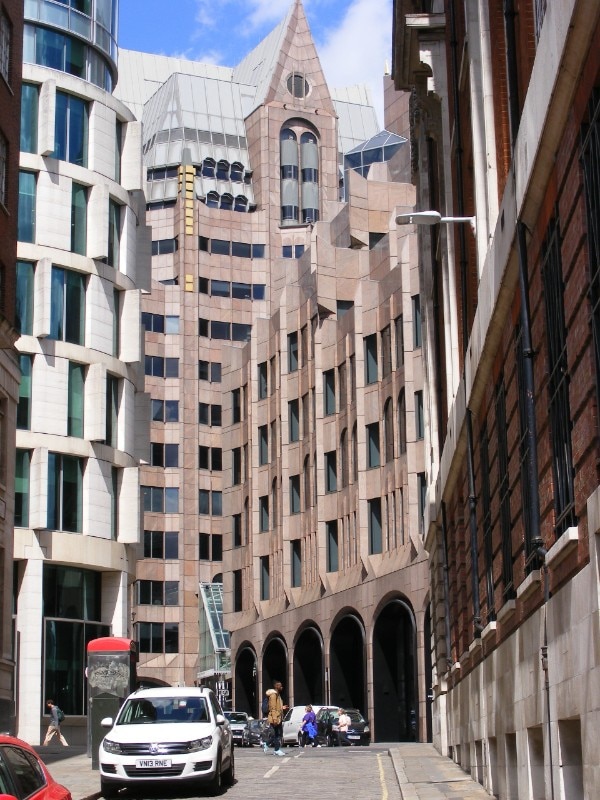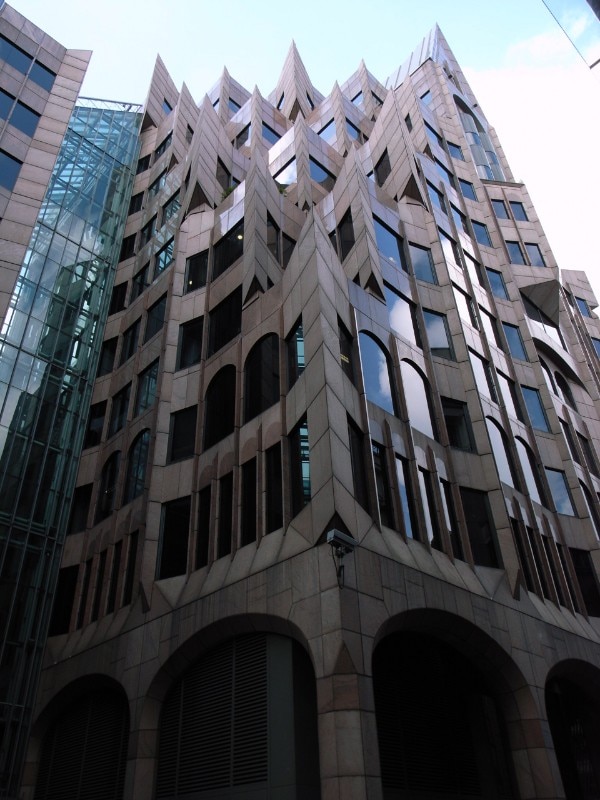Minster Court is the complex of buildings designed by Gollins, Melvin and Ward Partnership and the result of a fairy-tale excess of zeal in the 1980s that today stands out like an unlikely castle between neo-Gothic and post-modern in the City of London.
The explosion of marble and pink granite ripples in the façade and of markedly pitched roofs earned the building the nickname “Monster Court” or “Dracula's Castle” and ensured its entry into the world of cinema in the 1996 film version of “The Dalmatians”, as the location of Cruella De Mon's headquarters (who didn't prefer her to the blameless Anita?).

But reality overtakes fantasy and the pointy building is about to lose its quills and come to terms with its evil nature. Its owner M&G Real Estate is leading the operation that, without demolishing it, will give the building a facelift and make it completely unrecognisable.
The project concerns two of the three buildings that stand on the area (Minster 1 on the north-eastern edge of the site and Minster 2 on the eastern edge of the area) and the square that connects them, while the third building (Minster 3) remains unchanged for the time being. The project includes the redevelopment of the public spaces with a new tree-shaded square equipped with services, bars and restaurants, the refurbishment of the basements to be used as cultural spaces, and the redesigning of the access routes, lobbies and signage. The interiors will be reconfigured as prestigious offices with services (including restaurants, an auditorium and a wellness centre), while the exteriors will be completely revamped with the addition of an overhang with copper roofing, panoramic terraces and the elimination of facade protuberances. All under the banner of a major system adaptation to ensure the highest degree of environmental sustainability.

While the aesthetic reflection on “good” and “bad” taste is not new to contemporary thinking (cf. Gillo Dorfles, “Kitsch: The World of Bad Taste”, 1968), the doubt remains as to the legitimacy of such a substantial transformative operation, perhaps just as absurd as the one from which the original work sprang.

Villa Steurer, a smart oasis of elegance
On Lake Garda, an exclusive villa blends refined design with Gira smart technology. Designed by Kurt Steurer, the residence boasts interiors featuring premium materials and an advanced KNX home automation system that manages lighting, climate, and security, providing a personalized and state-of-the-art living experience.












